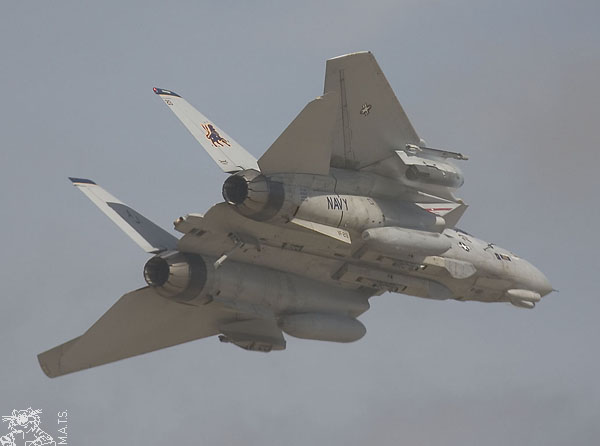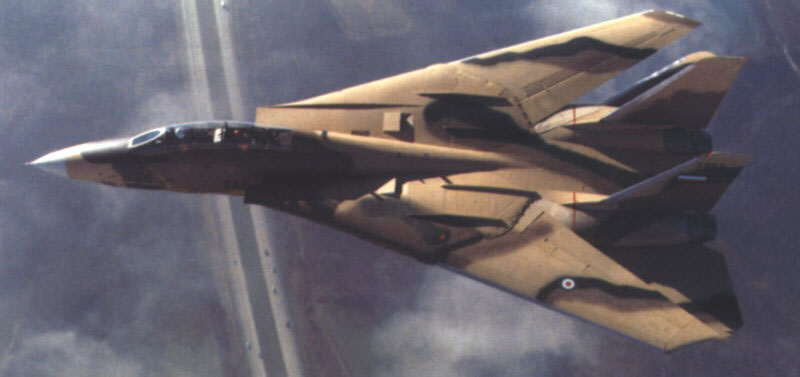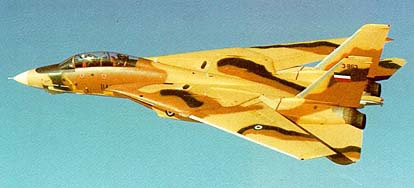Nope. That was Northrops' YF-17 Cobra.

Posted on 03/24/2005 9:22:21 AM PST by Paul Ross
The new shipbuilding strategy could spell trouble for Northrop Grumman Newport News.
WASHINGTON -- The Navy is considering shrinking its fleet of aircraft carriers to as few as 10 ships within the next 30 years, a move that would produce the smallest carrier fleet in at least a half-century.
(Excerpt) Read more at dailypress.com ...
The problem with that is that the size of the carrier is defined by the takeoff and landing requirements of its aircraft. Then you use that size to carry as many aircraft as you can. A smaller carrier doesn't just mean fewer aircraft. It means that you have a smaller deck which limits you to less capable V/STOL aircraft. The 35-40 aircraft will be Harriers instead of F-18s.
Any ways, even going smaller, there is no reason they can't be nuclear either, although it does raise the procurement cost, deployment-length, and operational expense (according to the GAO's 50-year life-cycle comparison of super carriers).
One of the best reasons to keep the big carriers is the "umbrella" they provide of air cover for the rest of the fleet. While that umbrella can be pierced, if the fleet reacts swiftly enough to use their superior striking power, mopping up the enemy, then the cruise-missile "storm" could be weathered.
Nope. That was Northrops' YF-17 Cobra.

F-14 noise is the sound of freedom!!!!!!!!!!!!!!!!
F-35s rather than Harriers, but what you would be giving up would be the ability to take off and land aircraft at the same time. (Although the Charles De Gaulle in that size range does have an angled deck.) The displacement will give you a roughly 850' x 150' straight deck - enough to handle the current aircraft. (The DeGaulle is about 850 x 250). Remember, the carrier which was used for C-130 testing was not much larger than what we are discussing.
We need to put the issue of strike aside, as clearly that is a reasonable basis for alternate "distributed" platforms. But is it reasonable to contend that fleet defense is viable with a much smaller carrier fleet? Can we detect the sea-skimmers without airborne radar? How will we have such a radar capability deployable?
What would our fleet air defense look like against cruise missiles, if, say, the Chinese got lucky, and crippled or sank all 10 big carriers in a surprise, sneak-attack? Could the fleet defend itself effectively anymore? What do we need to do in the alternative to quickly reconstitute an effective air defense? How much of a naval big-ship infrastructure should we maintain so as to have at least some of the repair ability we demonstrated after the Pearl Harbor attack (refloating and fixing many of the ships)? Could we, in todays or tomorrows industrial environment, repair damaged-in-port carriers in a timely fashion to make a difference to a war scenario?
Yes, it is!




Maybe so, Admiral, but if you don't have a carrier on station, your strike capability is 4 x ZERO -- which last time I checked was still ZERO.
Under my proposal, you would still have 9 or so (probably 5 or so operational at any one time) of the big carriers when they were specifically needed. You could also send 2 or 3 small carriers with an equivalent number of planes to do the job if necessary. I'll acknowledge that the smaller displacement will give you a less stable platform in rough weather. That is the only significant drawback.
As a side note, the 'small' carriers that we are talking about are about twice the size of those used by the UK (only 20,000 tons displacement, about 200' shorter than a Wasp or a CdG.) The proposed new British carriers are going to be almost 3 times the size of those in the existing fleet.
The Northrop YF-17 Shrike, forerunner of the Navy/Marine F/A-18 Hornet, didn't really lose the 'flyoff' against the General Dynamics F-16. The flight charactaristics were very close. The competition was a 'push'. The F-16 was 'chosen' because the F-16 used an engine (the GE F-100) that was common with the F-15 Eagle which was already in production. The USAF wasn't ready to add another engine to the supply chain. Logistical concerns tipped the scale in favor of the F-16 Falcon.
Besides, this was the LWF (Lightweight Fighter) project. Single-engine makes a bit more sense from a readiness standpoint. 'Course the Navy takes the view that 2 engines increase survivability.
Aren't those to be built, a'hem, in France? The folks whose propellers fall off?
I would think that endurance would be a problem for ROV's far into the future.
The problem with reducing carrier displacement is that the flight deck becomes much smaller and the sortie rate drops dramatically. You lose flexibility. Besides the jump jets that you will be operating of a small flattop aren't going to have 'legs' and so the ship will 'control' a much smaller area of ocean. This was Jimmy Carter's "Sea Control Ship" concept. It didn't work then either.
The YF-17 had more room for junk to be piled on...hence to be avoided...
I also recall having read that, but things may have changed:
"The two vessels, will be the largest and most powerful surface warships ever built in the UK...The ships will be designed and built entirely in the United Kingdom, with shipyards at Babcock BES at Rosyth in Scotland, BAE Systems on the Clyde, Swan Hunter in the North East and Vosper Thorneycroft at Portsmouth potentially playing key roles, creating or sustaining around 10,000 jobs in the United Kingdom."
http://royalnavy.mod.uk/static/pages/1971.html
I'd heard that Col. Boyd washed his hands of the F-16 too, because his concept called for no aerial radar in the nose. He felt that the F-16 could be even smaller and stealthier (like the Migs). He thought the F-16 was being "gold-plated". Boyd wanted a cheap dogfighter that could be fielded in massive numbers. What he got was a multi-role, strike fighter that wasn't all that cheap.
With o 1 for 1 replacement of small for large, you would be correct. A 3 for one replacement, when needed, would balance things out. And a properly designed 40,000 ton displacement should be able to handle conventional aircraft as well as F-35s. Recall that the problem with the conventional aircraft on the CdG was that there was not enough room to turn them. They could, however, push them back and then maneuver them on the flight deck. It is my recollection that a flight deck modification solved the problem.
Disclaimer: Opinions posted on Free Republic are those of the individual posters and do not necessarily represent the opinion of Free Republic or its management. All materials posted herein are protected by copyright law and the exemption for fair use of copyrighted works.